Samsung Galaxy Note 10.1 (2014 Edition) Review
by Brian Klug & Anand Lal Shimpi on October 1, 2013 9:00 AM EST- Posted in
- Tablets
- Samsung
- Mobile
- Galaxy Note 10.1
Display
The 2014 Edition features a 10.1-inch 2560 x 1600 Super LCD display. Looking at the subpixel structure of the panel we get an idea for exactly what Super LCD means: RB,GW.
Instead of a standard RGB stripe we get a combination of red, green, blue and white subpixels for each pixel. The white subpixel helps increase light throughput, an obvious problem with these ultra high resolution displays. The downside is that you get a lower subpixel density than a traditional RGB stripe. At these ultra high pixel densities however, the theory is that you wouldn’t notice the difference - hopefully making the power savings by having better light transmission, particularly when displaying lots of white (e.g. web pages), worth it.
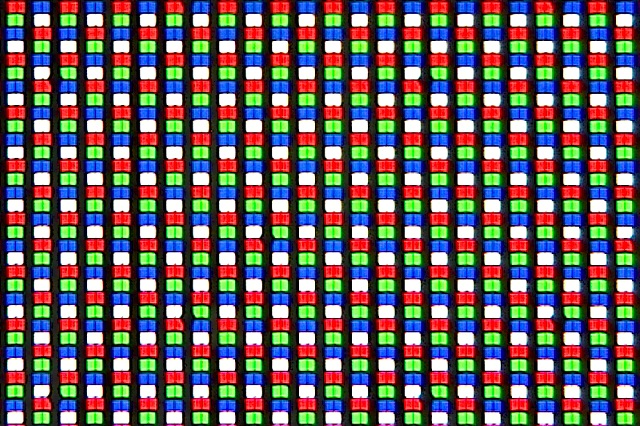
In practice the display looks pretty good, although a carefully trained eye will be able to recognize that this isn’t a standard RGB stripe. I quickly realized something was different about the display, something I later verified when looking at the subpixel structure.
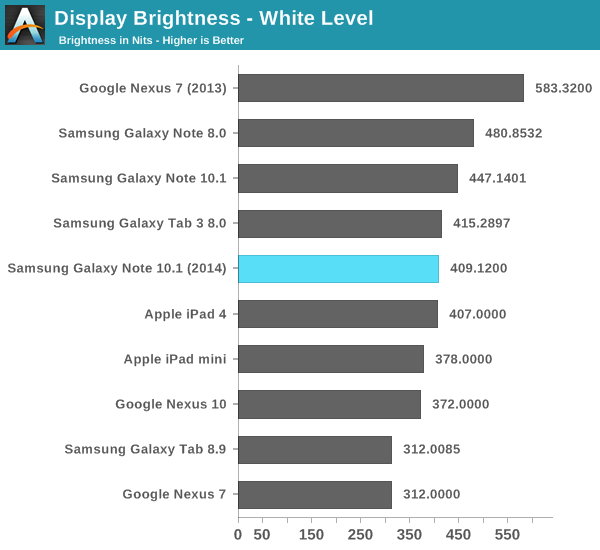
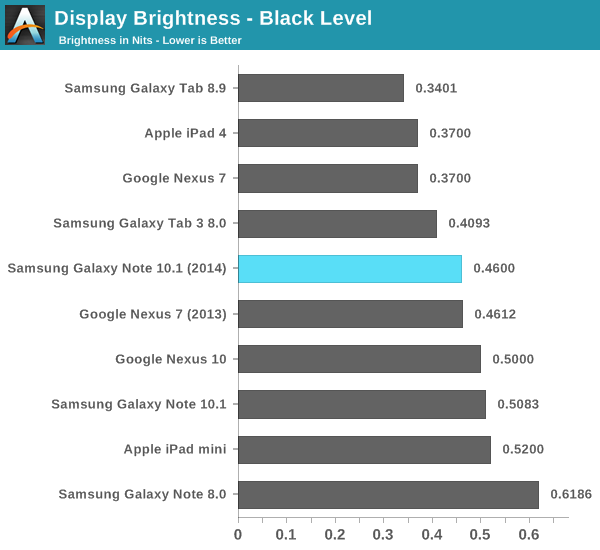
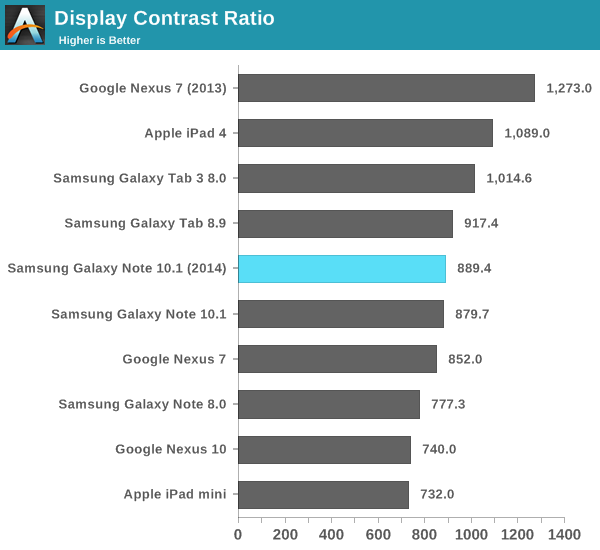
Color accuracy is pretty decent on the Note 10.1’s display. As always I’m reporting color data using Samsung’s Movie mode, which remains the most accurate setting of those offered. Grayscale performance is excellent, but our GMB and saturations tests put the Note 10.1 on par with the original Nexus 7. It’s definitely a better calibrated display than any other Samsung Galaxy Note tablet we’ve reviewed. Not quite on par with the new Nexus 7, but getting very close.
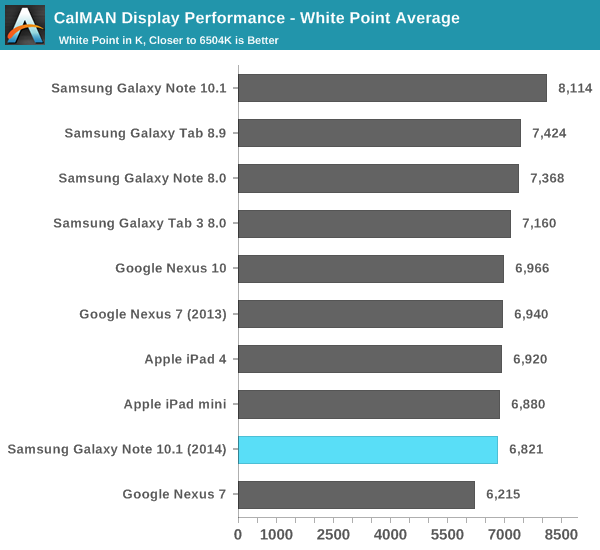
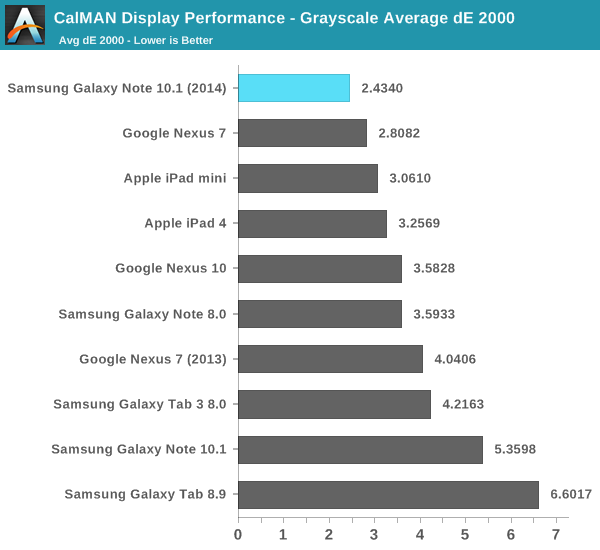
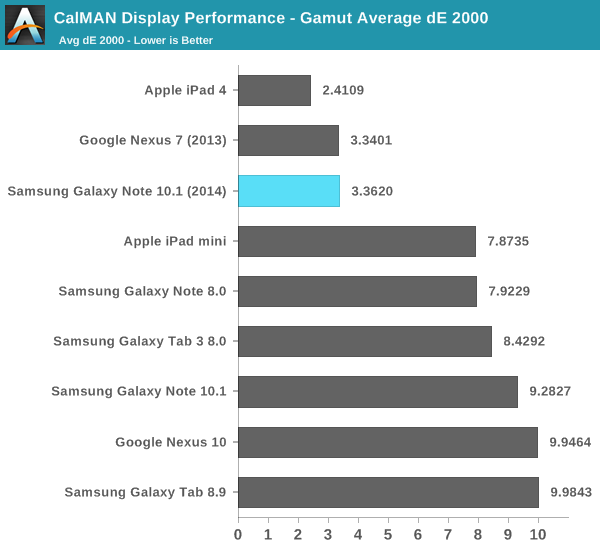
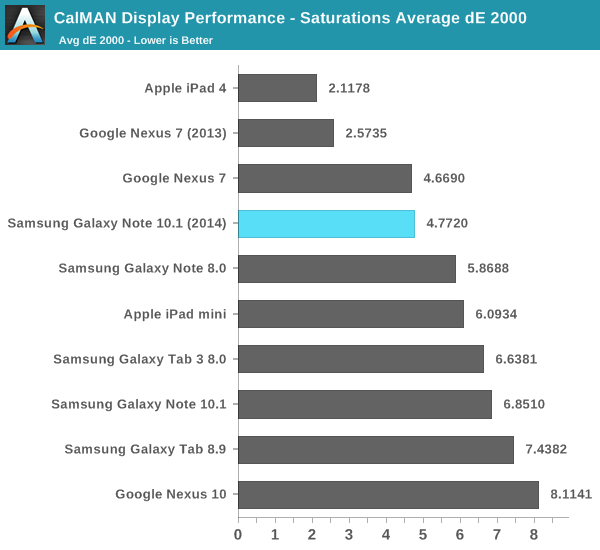
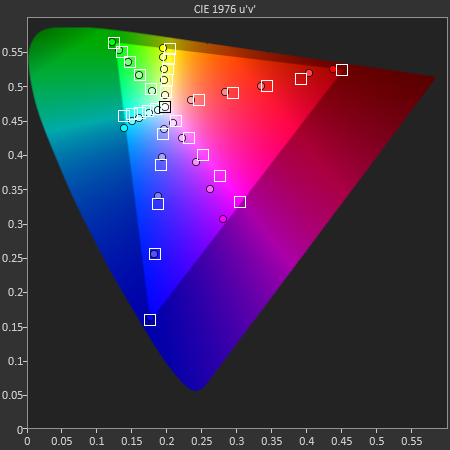
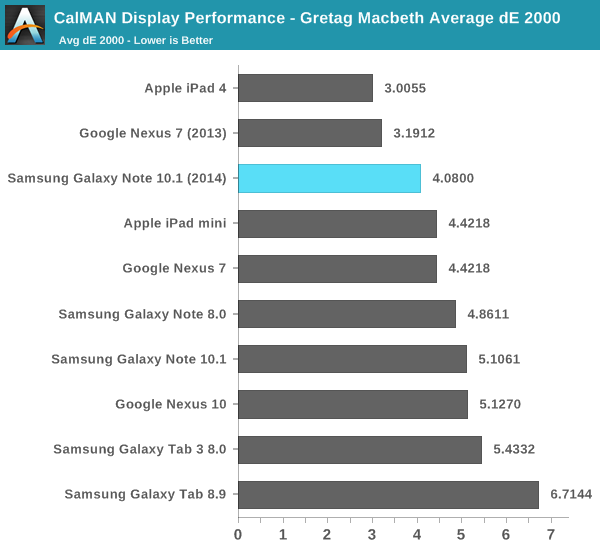

Camera
The 2014 Edition features a rear facing 8MP camera with AF and LED flash and a 2MP front facing camera. Image quality out of the rear camera was pretty good for a tablet. I took some photos using the tablet and tossed them in the gallery below, as well as embedded a sample 1080p video recorded using the tablet.
Battery Life & Charging
The Galaxy Note 10.1 (2014 Edition) ships with an integrated (non-removable) 31Wh battery, that’s substantially smaller than the iPad 4’s 42.5Wh battery - helping it maintain a more svelte figure. The question is how power efficient the combination of RB,GW panel and Exynos 5420 are in combination with one another.
We’ll start with our typical WiFi web browsing battery life test. Here we see a good combination of regular spikes in CPU usage with idle time, hopefully simulating constant, reasonably paced usage.
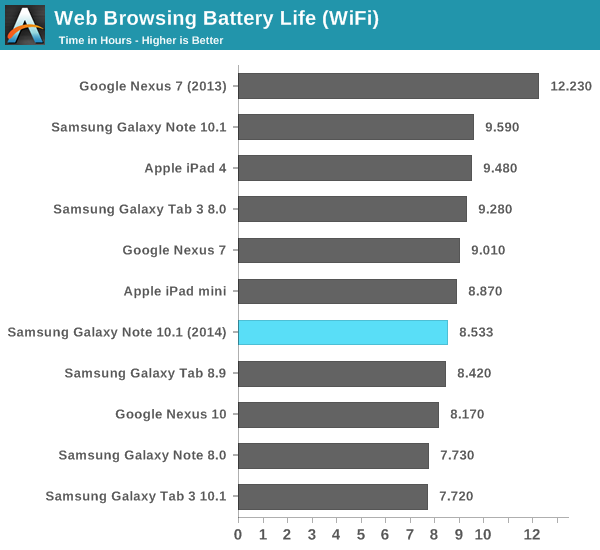
The 2014 Edition does a bit better than the Nexus 10, but clearly worse than the original Note 10.1 (and obviously worse than the much smaller Nexus 7). There’s not much you can do here other than to point out that we’re talking about an extremely high resolution panel, with an extremely power hungry SoC. The fact that we’re talking about more cores running at a higher frequency than the Exynos 5250 used in the Nexus 10 is good news, but Exynos 5420 also enjoys the benefits of being on Samsung’s 28nm LP process as well.
The video playback story is much better however. With the power hungry Cortex A15 cores able to power down (and hopefully remain there), we’re really testing the display and video decode engines here:
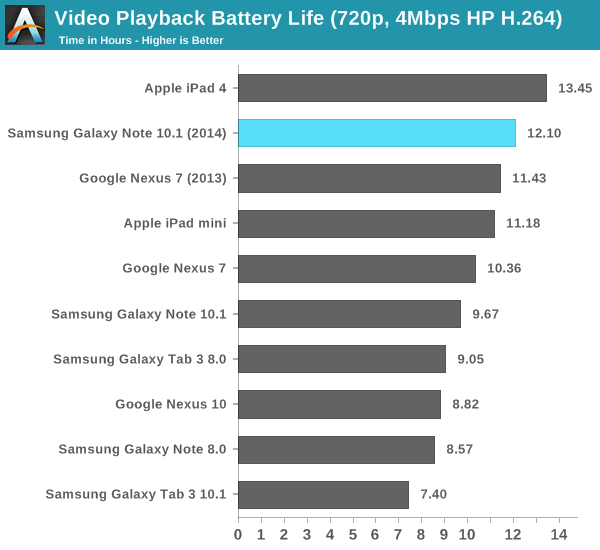
The Note 10.1 beats the new Nexus 7 and is only 10% behind the iPad 4, despite having a much smaller battery.
Like the Nexus 10, the Galaxy Note 10.1 (2014 Edition) takes an incredible amount of time to charge with the bundled 2A charger. A full charge from 0 to 100% took just over 7 hours.
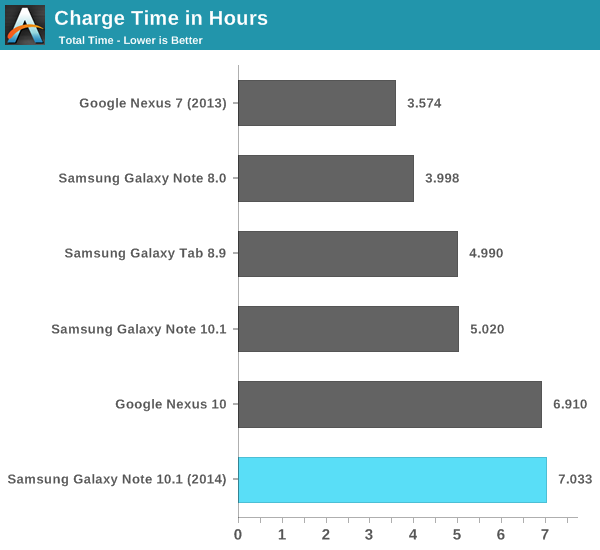
















97 Comments
View All Comments
lilmoe - Tuesday, October 1, 2013 - link
You guys do realize that Sunspider, Octane, Kraken, and other similar benchmarks are all BROWSER benchmarks, right? They reflect the javascript rendering performance of the browser more than anything... This isn't comparing apples to apples, and it most definitely doesn't show actual difference among different CPUs, ESPECIALLY that they're not running on the same platform, let alone the same browser!dwade123 - Tuesday, October 1, 2013 - link
I just can't find a use for Android tablet. Like literally. Can't do work, and only superficial entertainment at extremely low standards. It's a shame Windows 8.1 tablets are overpriced.thesavvymage - Tuesday, October 1, 2013 - link
Seriously. The only things I do on mine are browse reddit, watch videos, and use emulators. Anything else I want to do I can't because of limitations with the browser, or the browser being slow, or Android not having the apps I want.nerd1 - Wednesday, October 2, 2013 - link
You can browse the web and annotate documents and slides. I won't buy any tablet without active digitizers.AEdouard - Thursday, October 3, 2013 - link
Yeah, but you know, with its great display and low price, the New nexus 7 is a good buy even if it's just to browse the web, consume content, check emails and play some games. When I want to do more complicated stuff, I use my Macbook.Streamlined - Saturday, October 5, 2013 - link
It's a shame Windows tablets are so big and heavy.ESC2000 - Thursday, October 10, 2013 - link
I can't find use for an iPad: expensive (no good cheap option like the nexus 7 2013) and very limited functionality from a productivity standpoint (no multi window, no stylus, no swype, no useful windows programs like office).... It's literally a blown up iPhone. You can't do anything more on it. Since it's not a productivity device (aside from the determined hipsters who I see slowly pecking out their papers on their iPads even though it's taking them twice as long without multi window and office), it must be a consumption device. That it does well but why spend so much more money when you can get a great android consumption device for much less?abazigal - Friday, October 11, 2013 - link
The problem then comes when consumers are not getting more of what they want (in an Android tablet), but instead being saddled with more issues that they need to contend with. Apple devices just work right out of the box.The next issue is that you need to understand and accept that different people have different definitions of productivity. For example, I am using my ipad quite extensively in the classroom, from recording screencasts in educreations to annotating on pdfs through notability.
Third, Android still lags behind IOS when it comes to optimised tablet apps. Are you really going to pay so much for a tablet, only to run blown-up phone apps?
I can go on, but all in all, people get what they pay for.
XFire99 - Sunday, October 13, 2013 - link
Right out the box is total bull.1. Iphone/Ipad need to be activated before can use.
- Itunes that need a computer.
- WiFi that needs internet access.
- Cellular that are not available in all areas.
Also I NEVER understand in which way android devices is not working direct out of the box? Configurations/widgets isnt a must to start to use the device.
2nd issue is u self do ned to understand that android tabs can also do same thing.
3rd issue.Is the only thing u are right about. Android tabs apps are way behind iOS tabs apps. The problem there are way more android tabs with different resolutions and iOS have only 2 tabs models. Much way easier to optimize then android tabs.
But iOS starts to face this problem too, with IP5S/C release and iOS 7. Sooner IPad5/mini.
pSupaNova - Tuesday, October 1, 2013 - link
The Dimensions on the table for the Galaxy tab 3 10.1 don't look correct.Good review as always.